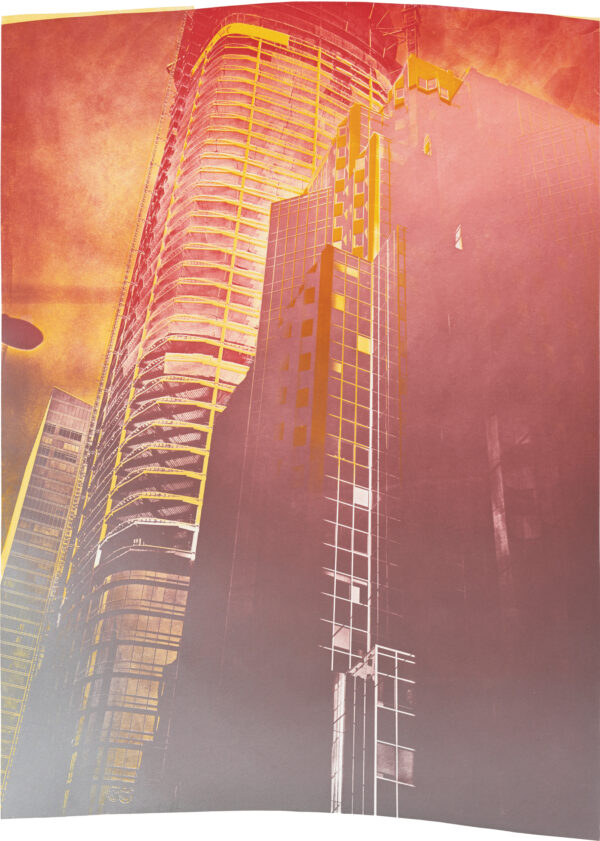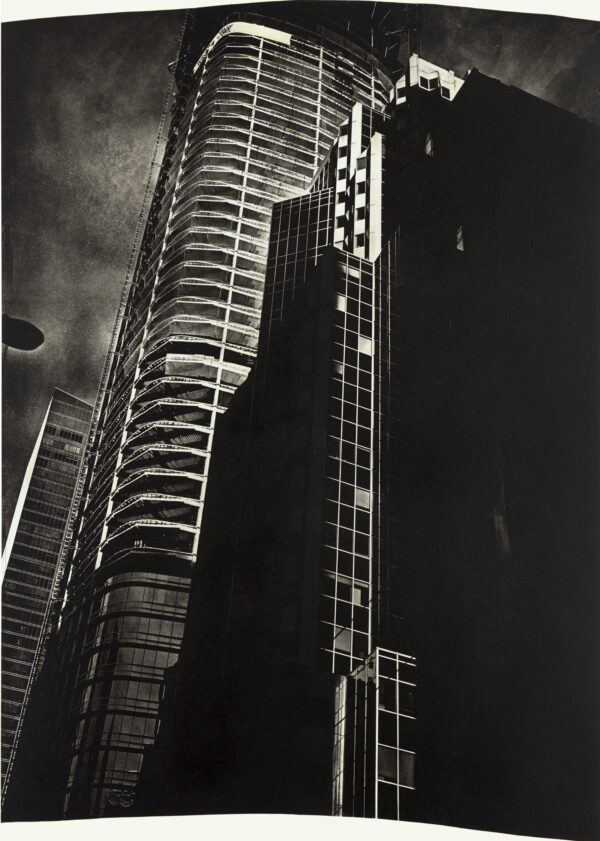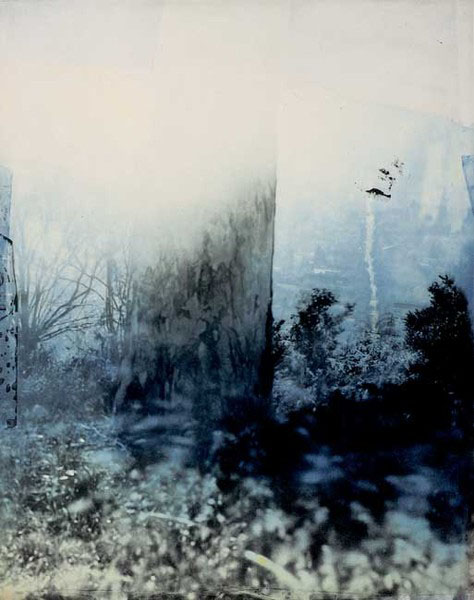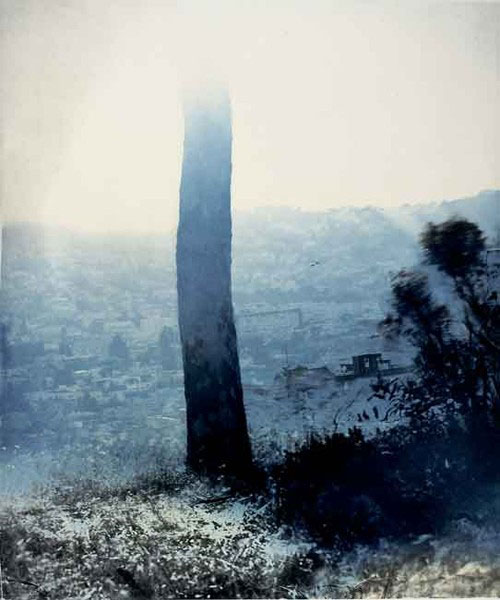John Chiara is a San Francisco photographer who works with a homemade camera the size of a U-Haul trailer. The New Yorker ran this capsule review of his first solo show in New York (Von Lintel Gallery, 2008): “Long exposures and their inevitable accidents give Chiara’s Bay Area landscapes a fogged, dreamy look. The camera is drunk or drugged and can’t quite focus; trees, underbrush, and distant mountains float and heave in overexposed washes of blue, green or purple light. The largest prints look like they were transferred straight from a blissed-out eyeball to the astonished wall.”
Chiara was born in 1971, in San Francisco, with a large benign tumor under his chin which could not be removed until he was a teenager. He said, “Anybody I’d meet from the time I was really little to age fifteen, it’d take them two weeks to get over it. I feel like my camera’s sort of like that – it’s just a really dramatic imperfection.” When Chiara was seven years old, his father, a photographer, gave him his first camera. He grew up in and around his father’s darkroom, and childhood memories are part of his work. For instance, he often photographs hillsides that remind him of the one he grew up on in the suburbs east of San Francisco. He has an intense allergy to nostalgia, however. His complicated process is no more complicated than what he feels is necessary to keep memories from getting rosier over time.
Chiara earned a B.F.A. in photography at the University of Utah in 1994, and he worked steadily to figure out what kind of photographer he wanted to be. It was during graduate school at the California College of the Arts in 2004 that he built his giant camera. When he was finished, he realized he had inadvertently reinvented the daguerreotype camera, but it gives him a customized space in the photographic tradition, so the result suits him.
To make one image can take most of a day. Chiara tows the camera to the site he has chosen. He prefers unsung, off-kilter vantage points: hillsides, brush, fog-loaded trees. He climbs into the trailer and tacks photo paper to the back wall. The inside of the camera is also the darkroom, since he shoots onto photographic paper rather than film. He adjusts the lens and burns and dodges the image with his hands. The movement of his body in front of the sensitized paper leaves ghost traces in the image itself. He has to wriggle out of the camera through a lightproof plastic tube to avoid exposing the paper to unwanted light. Back at his studio, he develops the prints in a capped length of PVC sewer pipe by pouring in chemicals and rolling the pipe across the floor to agitate it. Each stage of the process is an opportunity for chance to collide with whatever his plan for the image may have been. He explains, “There’s a noise in the process that I think is revealing and meaningful. It’s like the failure of memory.”
John Chiara has worked at Crown Point Press on two occasions, in 2006 and in 2016, completing a total of ten photogravures. Recent solo and group exhibitions have been held at the Denver Art Museum (2019); Galerie Miranda, Paris (2018); Santa Barbara Museum of Art (2018); the Museum of Photographic Arts, San Diego (2016); Jackson Fine Art, Atlanta (2015); and Museum Bärengasse, Zurich (2013). His work is held in the permanent collections of the National Gallery of Art, Washington, D.C.; Pier 24 Photography, San Francisco; J. Paul Getty Museum, Los Angeles; Haggerty Museum of Art, Milwaukee; and the Los Angeles County Museum of Art. His work was the subject of a monograph titled John Chiara: California published by Aperture in 2017. He is represented by Haines Gallery, San Francisco; Rose Gallery, Santa Monica; and Yossi Milo Gallery, New York.
-Kim Bennett, Crown Point Press
VISION #6: ART AND FOOD











